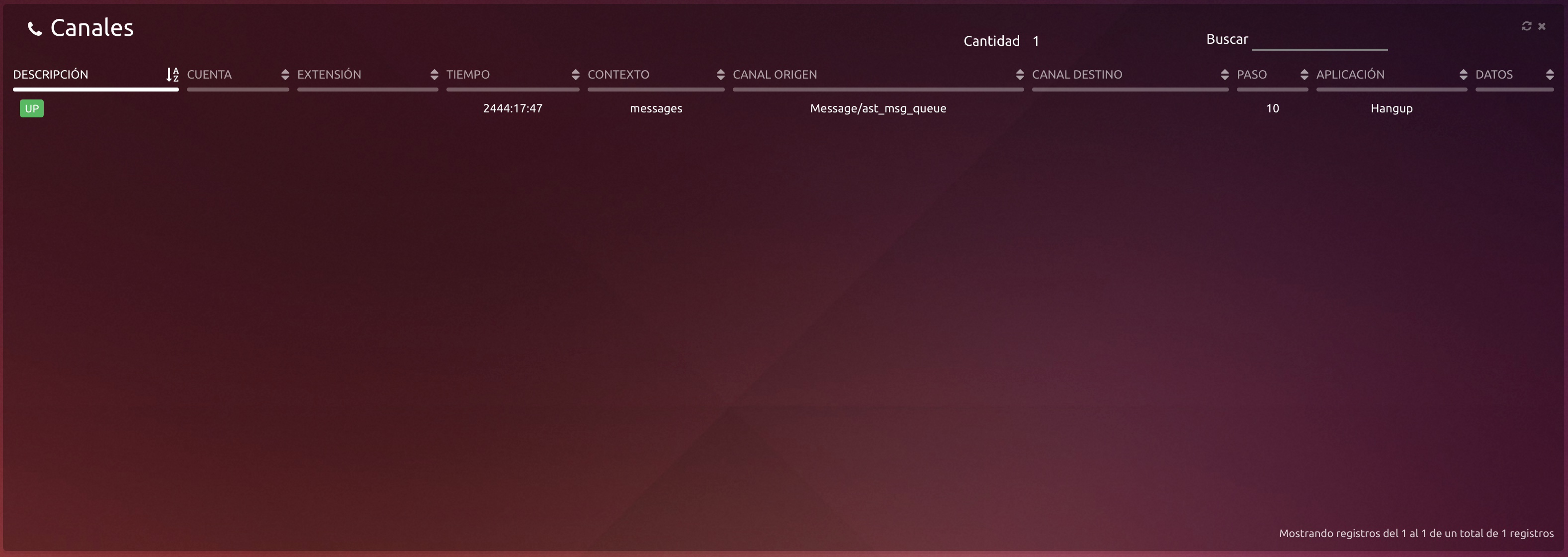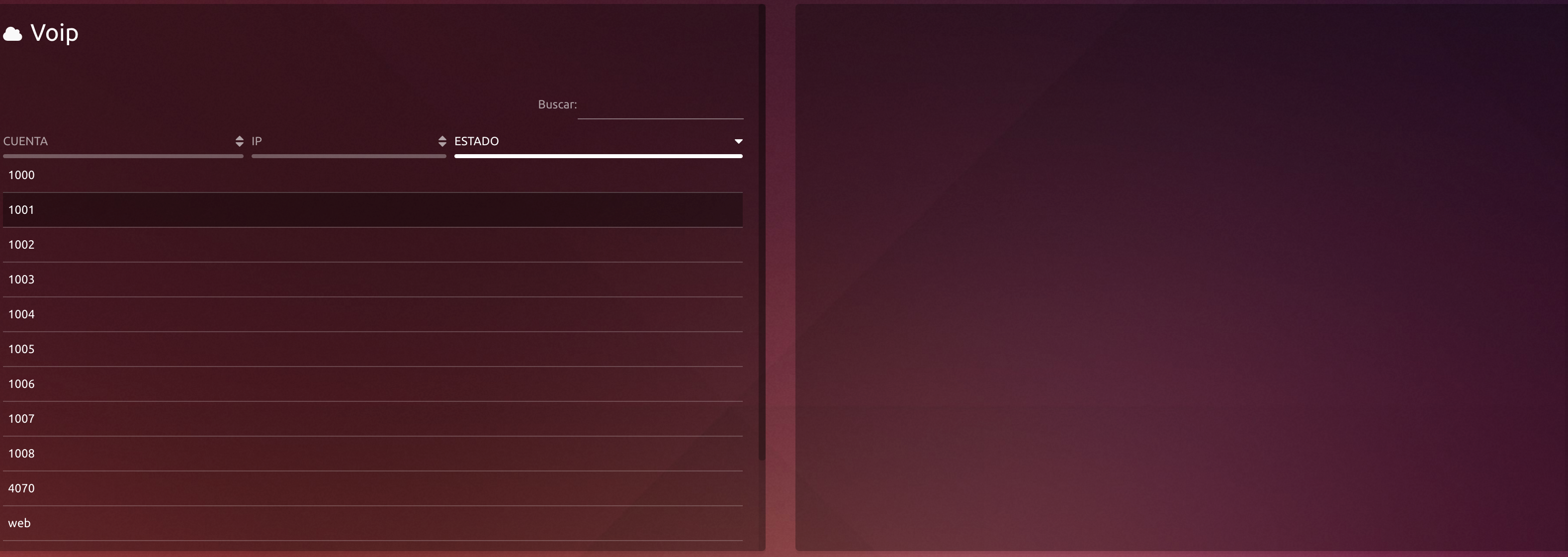 No alarm.
No alarm.
 Red alarm.
Red alarm.
 Yellow alarm.
Yellow alarm.
 Blue alarm.
Blue alarm.
 Recovering.
Recovering.
 Not open.
Not open.
Detailed status of the lines that are being used or not.

Displays physical channels associated with telephony cards status:
Status:
 No alarm.
No alarm.
 Red alarm.
Red alarm.
 Yellow alarm.
Yellow alarm.
 Blue alarm.
Blue alarm.
 Recovering.
Recovering.
 Not open.
Not open.
Channel: Number of channel.
Signaling: FXS, FXO, PRI, BRI, R2 corresponding to the channel (remember that analog signaling is the opposite channel type eg. Whether I have FXO signaling channels is FXS).
Context: Context that is grouped.
Data: Free or in use, can be unknown if nothing is connected.
Account: Display extra information about the channel connection.
Hang-up Button: Hang-up a selected channel.
Extended Information (to select a channel from the list):
Channel: Channel name.
PSTN: CallerID phone side.
Language: Channel Language .
Status: Channel status (unknown, low, quiet, OffHook, marking, ring, ringing, connected, busy, marking OffHook, peering).
Rings: Number of rings before answered.
Duration: Of the call in h: mm: ss.
PBX: CallerID PBX side.
Extension: Where matching the dial plan if applicable (incoming).
Priority: If is an IVR what step is.
Application: If an IVR application is running.
Data: Application parameters.
Group: Dial group which is associated with the channel.
Menu for supervising active calls on the system
Information about active channels (no direct correspondence between one call and a channel, 2 call sides or 1 may be a call). What you see here are created telephony channels, a channel may be an established call between the street and an IVR, or the PBX to an agent or phone, is thus noteworthy that the fields origin Channel and Destination Channel are cross linked on a bridged call that involves 2 call sides.

Status:
DOWN: Not available.
RESERVER: Reserved
OFFHOOK: Offhook.
DIALING: Dialing.
RING: Listening ring.
RINGING: Ringing.
UP: Active.
BUSY: Busy.
DIALING OFFHOOK: dialing offhook.
DIALING PRERING: dialing prering.
Account: Usually the extension you are connected, you may also name the carrier.
Source: ANI (callerid) number of the origin of the call.
Extension: DNIS, DID, internal extension.
Time: Channel active time.
Context:Context where the call came.
Origin Channel: Channel where the call started example. SIP/1001 or IAX2/1002 (IP) DAHDI (conventional telephony).
Destination Channel: Channel where the call was connected.
Step: Step in the dial plan.
Application: Application Name where the dial plan call is currently placed
Data: Data passed to the application.
In the upper right corner is a button which can hangup a channel. (IF ONE OF TWO CHANNELS IS HANGED BOTH INTERCONNECTED CHANNELS WILL BE HANGED).
On the other hand we have a button to refresh the status of the active lines. By default updated every 20 seconds.
Menu for supervising Voip endpoints.
Show all VoIP endpoints connected to the system, such as administrative phones, agents or gateways.

Type: Voip endpoint Technology(the iconography corresponds to this difference, change the icon when it is a GW connected as shown in the picture).
Account: Phone or VoIP endpoint name.
IP: IP address of the endpoint.
Status: Status of the component displays OK and the arrival millisecond.
Extended information (by selecting an endpoint):
Channel: Type and number and type endpoint or destination channel number.
PSTN: CallerID phone side.
Language: Channel Language
Status: Channel status (unknown, low, quiet, OffHook, marking, ring, ringing, connected, busy, marking OffHook, peering).
Duration: Of the call in h: mm: ss.
Extension: Match of the dial plan.
Priority: IVR step.
Application: Running application.
Data: Running application parameters.
Account: Can be the name of the extension and / or account name of the PSTN, there may be two entries in this data depending on the type of call.